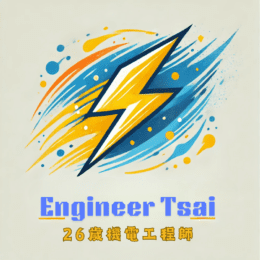Do you remember how it felt the first time you had to face a major electrical restoration all by yourself?
For me, it was shortly after I graduated from vocational training and had just started my career as an electrical technician. Everything was new—and honestly, a bit intimidating for electrical restoration.
My very first big job was an emergency electrical restoration at an electroplating factory.
The reason was both simple and terrifying: the second-floor electrical panel had caught fire after years of electrical overload.
My First Real Challenge
When I arrived, the entire place was covered in black soot. The air was thick with the smell of burnt plastic and copper.
The boss looked pale, and even the seasoned workers had no idea where to begin.
At that moment, as a complete rookie, I felt a pressure heavier than the summer heat.

The first step was simple. We had to remove the burned distribution panel. Next, we prepared for a full-scale electrical restoration with a brand new panel.
At first, I thought it would just mean swapping out some parts. I was wrong. The real challenge came next. We had to pull three thick 250mm power cables. They needed to go from the main electrical box on the first floor up to the new panel on the second.
The cables were extremely heavy and stiff. We couldn’t move them by hand.
We set up scaffolding. For the first time in my life, I used a chain hoist to finish the electrical restoration safely.

I still remember that day, working alongside my senior, setting up the scaffolding. It was my first time standing so high up, and my hands were shaking with nerves.
The power cable felt like a massive python—heavy and stubborn. While one end was being slowly hoisted up to the second floor with the chain hoist, we had to coordinate with the teammates below to keep everything steady.
“Pull!” my senior shouted.
I summoned every ounce of strength and hauled upward. We took turns, one after another, passing the cable along until, at last, it was finally in place.
By then, my uniform was completely soaked through. Sweat and dust clung to my skin, and my hands were covered in blisters. But there was only one thought in my mind:
“This is what it means to be on the front lines of electrical restoration—there’s no backing down.”

Once the new distribution panel was in place, we still had to run new conduit, pull wires for the lighting, install brand-new LED fixtures, and finally tackle the biggest challenge—setting up the control box for the electroplating machine.
There was no room for error. A single misplaced wire could have meant undoing all our hard work in this electrical restoration. The moment I remember most vividly was the final wiring test, when everyone gathered around, watching as my senior and I prepared to flip the main switch.
As the lights flickered on and the control box clicked to life, you could feel the tension in the air finally ease. The boss’s anxious look melted into relief and gratitude. He came over and clapped me on the shoulder:
“Young man, well done. You guys really saved the day.”
After that experience, I realized I wasn’t just fixing things—
I was, step by step, learning to trust myself through every electrical restoration challenge.
I used to think that failure was embarrassing. But after working on site, I understood: every obstacle, every mistake, is actually a chance to grow.
If you’re willing to try again, ask for help, and grit your teeth through the tough spots, you’ll discover what all engineers eventually learn—the journey from feeling powerless to finding confidence, from doubt to belief, is the real faith we build on the job.

Looking back, I often wonder why the toughest moments end up being the ones I remember most vividly.
Maybe it’s because every time I brought a factory, a home, or even just a single cable back to life, I was really building a bridge inside myself—
A bridge that helped me cross from fear to courage, from failure to success.
That’s also how engineers develop a unique sense of camaraderie—knowing that we’ve all crossed that bridge, each in our own way.
—
What about you? Have you ever faced something that scared you at first, but managed to push through and make it work?
Was there a repair or jobsite experience that taught you about responsibility, or even faith in yourself?
I’d love to hear your story in the comments—let’s keep building this bridge of faith together, one experience at a time!
—— Engineer Tsai 2025.06.01
📌 Further Reading:
🔹 Short Circuit: What It Is and How to Prevent It
Most disasters start with small details—prevention is always better than repairs.
🔹 Joule’s Law Made Simple: How Electricity Turns Into Heat
Understand why wires overheat and how fires start—practical knowledge for both daily life and the jobsite.
🔹 Conductors and Insulators: Practical Guide to Electrical Safety
The first step to safe wiring is knowing the difference between every type of wire around you.
🔹 Why Is Electrical Grounding Important? Safety Tips & Best Practices
Nothing is scarier on site than electric shock—grounding knowledge gives you peace of mind.
🔹 Mastering DC and AC Power: Everything You Need to Know
Clearing up common jobsite myths about DC vs. AC—get it straight, once and for all.
